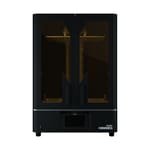After the very successful Elegoo Mars and its various variants, and the long-awaited but no less acknowledged Saturn, comes the Elegoo Jupiter. Astronomically versed readers might have noticed Elegoo skipped a planet during the naming process, but maybe going for the largest rock in our solar system and the Roman god to boot seemed a fitting approach to the unit of a printer the Elegoo Jupiter is.
With over four million dollars raised during its Kickstarter campaign, the printer now seems to be sufficiently funded, and production of the first units is slowly starting. It is available for pre-order and, according to Elegoo, will be shipped out in May 2022.
We went on an exploratory mission to this new and promising planet. Read on to discover all we know about it so far.
Features
Large Build Volume
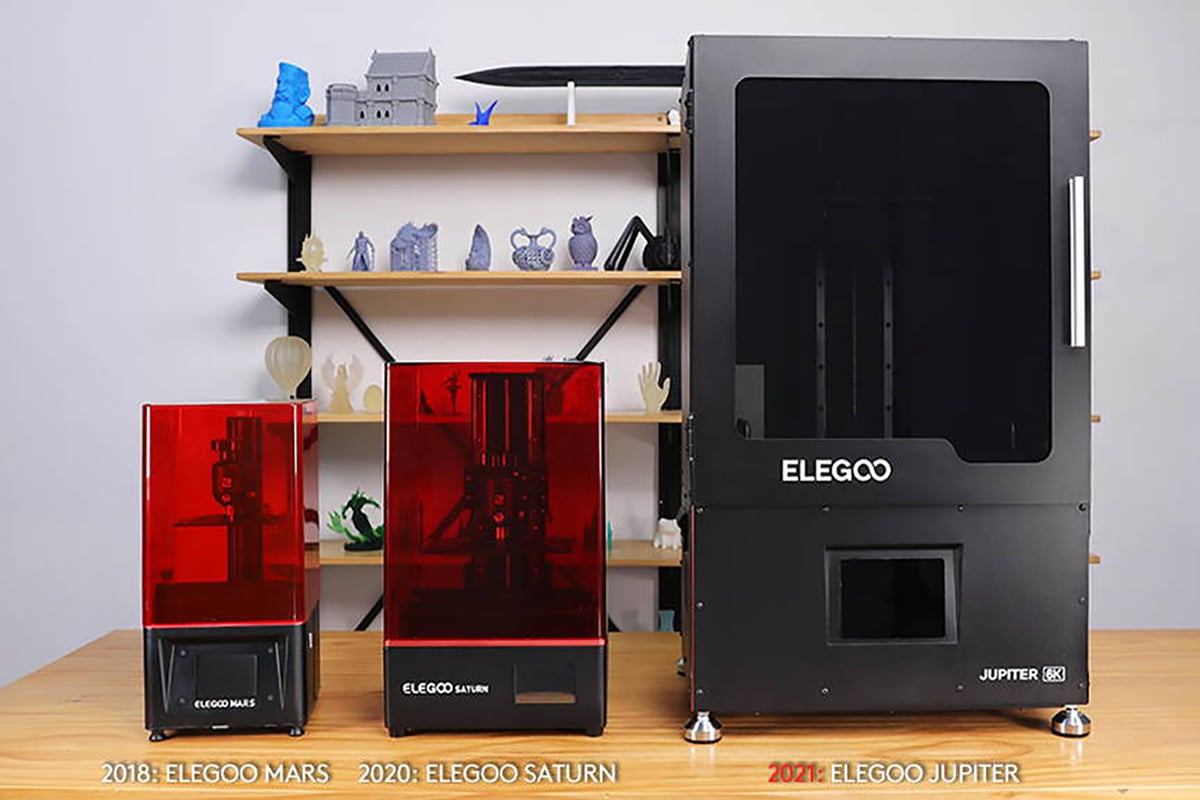
The Elegoo Jupiter will sport a 277 x 156 x 300 mm build volume. Compared to Elegoo’s previous largest 3D printer in the roster, the large(-ish) Saturn (192 x 120 x 200 mm) the Jupiter offers roughly three times the total print room. Not too bad of an upgrade for its fleet, but how does it stack up against competitive large resin printers? Well, the print volume of the Jupiter is by no means puny, but with the recent release of the somewhat-affordable Phrozen Sonic Mega 8K, build volumes of 330 x 185 x 400 mm are finding their way to the realm of affordable large resin 3D printing. Size-wise the Jupiter scratches on that plaque, but it’s not quite up there with the big, big boys.
6K LCD screen
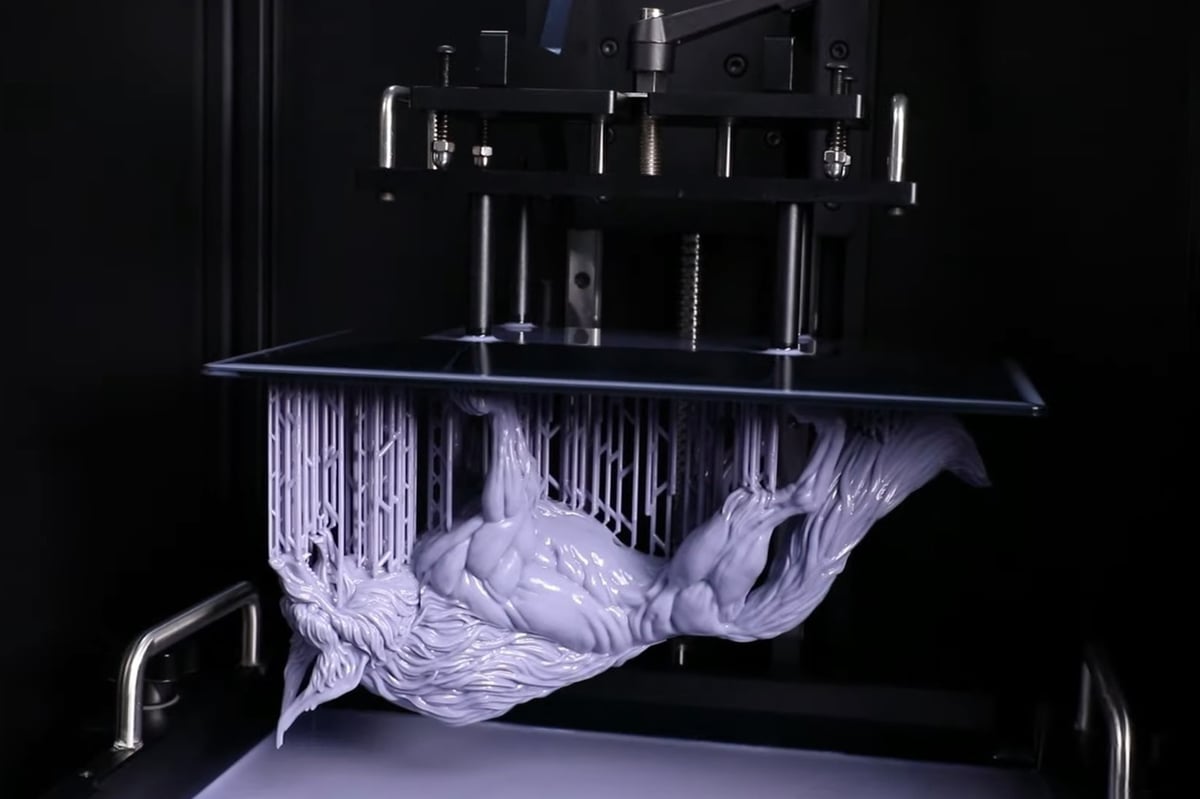
The 277 x 156 mm printable area is facilitated by the 12.8-inch LCD screen the Jupiter houses. Besides being monochromous, which allows it to print fast and endure longer, the screen is also considered 6K. With 5448 x 3064 pixels spread out across the LCD, the Jupiter can print at an accuracy of 51 microns. In other words, pretty much the same as what you get on the Elegoo Saturn (and the likes), which has an 8.9-inch 4K screen.
But, with the above-mentioned and recently-released Phrozen Sonic Mega 8K, an even larger printer that features, as the name suggests, an 8K LCD as its mask and is capable of printing at an accuracy of 43 microns, one could raise the question of whether 50-microns should be considered old hat — especially when it will only be released in roughly half a year.
Well, while there is more granularity available (in the large resin sector currently only Phrozen’s Mega 8K), the difference in details is to such a degree that it is hard to spot with the naked eye. The Jupiter is certainly not pushing the boundaries here, but, at the time of writing, we feel it is (read: will be) in no way outdated come the release date. The industry seems to have settled around the 50-micron mark with a few outliers here and there. Let’s just hope that there isn’t a paradigm shift until it is released in spring 2022.
Automatic Resin feeding
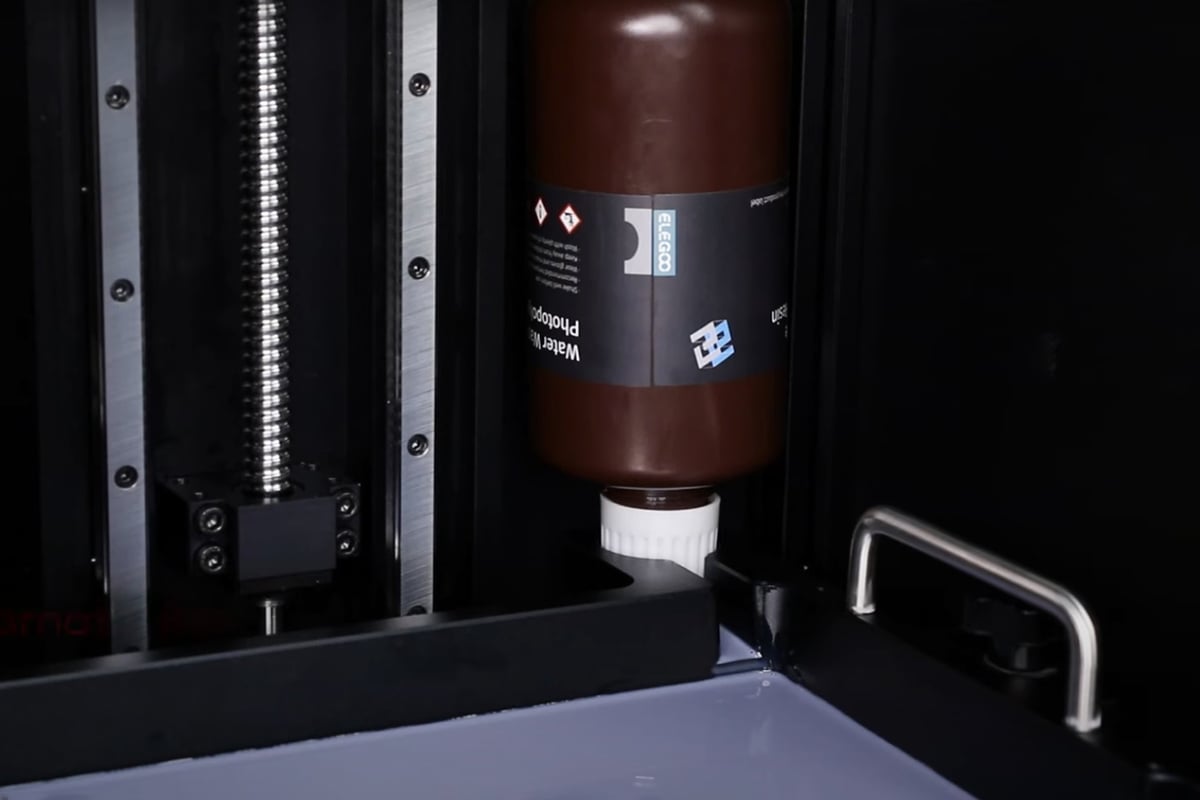
So, no extravaganza when it comes to print resolution, but the Jupiter does bring a first to the budget sector. We are talking about its automatic resin feeding system. When first news about it broke, we were thinking along the lines of, say, the Formlabs Form 3‘s resin tank, but turns out it is a less sophisticated approach. Essentially, the Jupiter comes with a unique screw-on cap for resin bottles that allows you to place them upside-down (without spilling resin, obviously) inside the back of the printer with an influx to top of your resin should it run low.
How exactly this will work when printing with color blends remains to be seen in testing, but it looks like Elegoo managed to pull out a pro feature for this somewhat budget machine. As the Jupiter does have a pretty large build volume, this should prove to be a handy feature. No more running out of resin mid-print, we hope.
Sturdy Build
For the unit that the Jupiter is, you obviously want a bit of sturdiness to go along with it, and from the looks of it the Jupiter does deliver. The printer’s body and casing are made of sheet metal topped with aluminum alloy for its handles and other components.
On the inside, the printer comes with a dual rail-guided lead screw with four sliders that promise smooth and durable operation. According to Elegoo, this will effectively reduce the Z-axis wobble phenomenon, also referred to as “Z-axis nodding,” which some users encountered on the Mars 3.
What’s more, according to Elegoo, the Jupiter’s build also allows you to easily upgrade the printer with expansion kits, such as increasing the height of the Z-axis to 500 mm, for example.
Touchscreen and new UI
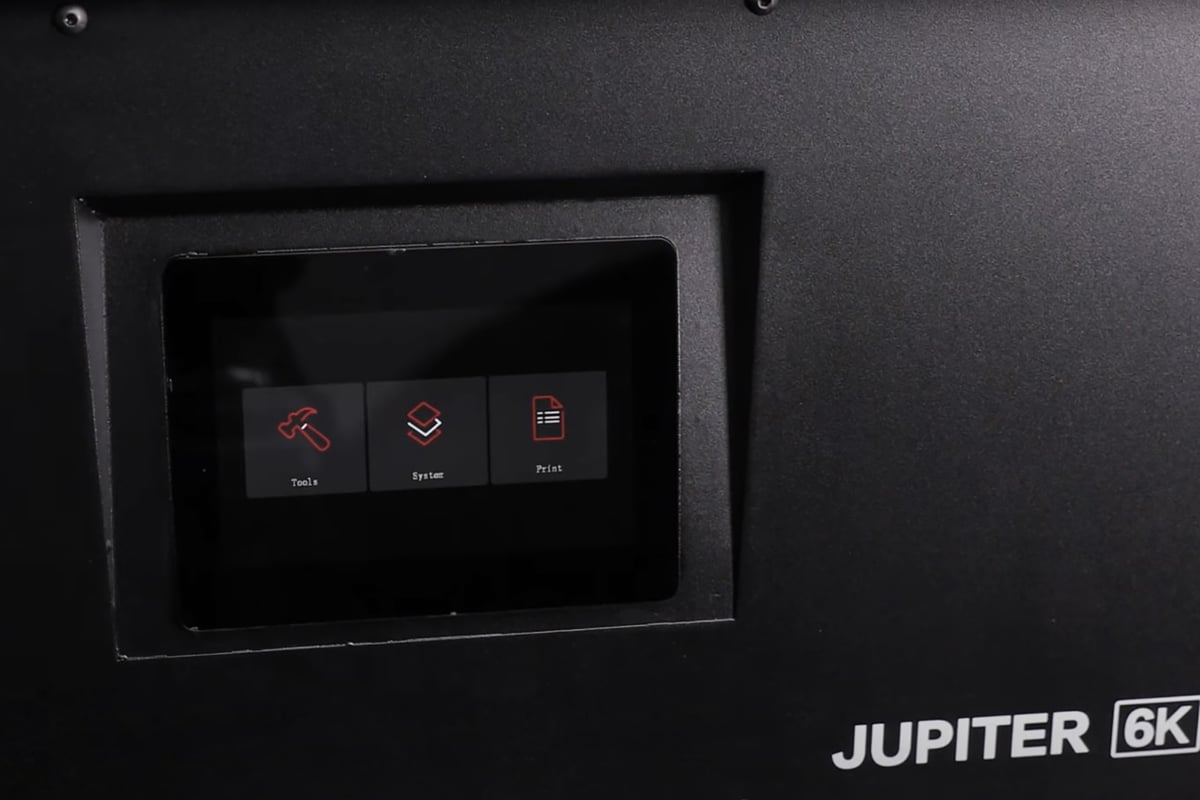
A large printer needs a large operational panel. You don’t want to tap away at a tiny, tiny screen in any case, even less so when working with a big resin printer. At least that’s how we feel here at the All3DP HQ. For the Jupiter, Elegoo decided to go with a 5-inch color touchscreen that should provide all the ease-of-use and accessibility you would want.
From the looks of it, Elegoo also ramped up its UI, coming in a new attire compared to what we are used to on the Saturn or Mars series. Whether additional features are included or if it is merely an optical revamping remains to be seen, though.
As with the Mars 3, the new Jupiter will also come with a one-year free subscription to ChiTuBox Pro (worth $169 on its own). The new, professional ChiTu version offers a bunch of helpful features that make large resin 3D printing a tad easier in preparing, but you can operate the printer with the free version just as well. Keep in mind though, that due to the new and encrypted CBD-Tech board, the printer houses, third-party slicers will no longer be able to slice prints for the Jupiter.
Further Features
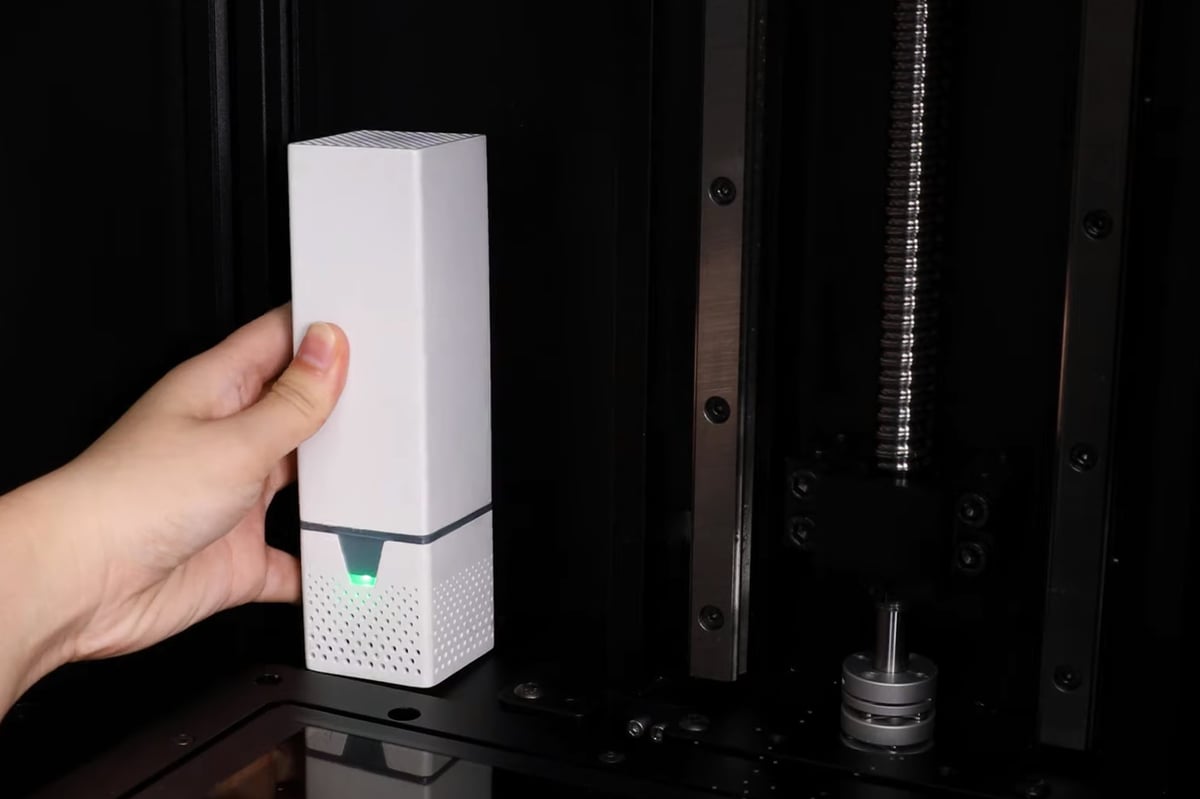
Additional features on the Elegoo Jupiter include:
- COB light source: Equipped with a powerful COB light source, the Jupiter promises a high light utilization and uniform distribution that should help to create clean and accurate prints.
- Built-in LED lighting: Even more LEDs, not for curing this time, though. The print chamber will light up if you open the doors, allowing you to take a proper look.
- Air purifier: Before the stinky smell of resin 3D printing gets ventilated out tough the cooling fans, you can run it through an inbuilt activated carbon filter. It looks like it will be easily interchangeable. A big plus, as these things run dry over time and need to be replaced.

Release Date & Availability
The Elegoo Jupiter was announced on Kickstarter and raised over four million dollars in backings during its month-long fundraiser. We have it from Elegoo that the first bunch of engineering prototypes are in the making. At the time of writing, the Jupiter is slated to be released in May 2022.
Elegoo seems to have sent out a beta unit or two to some of the usual YouTube reviewers. For an early glimpse of the machine in action, feel free to check it out, but expect a handful of changes to be made for the final product.

Price
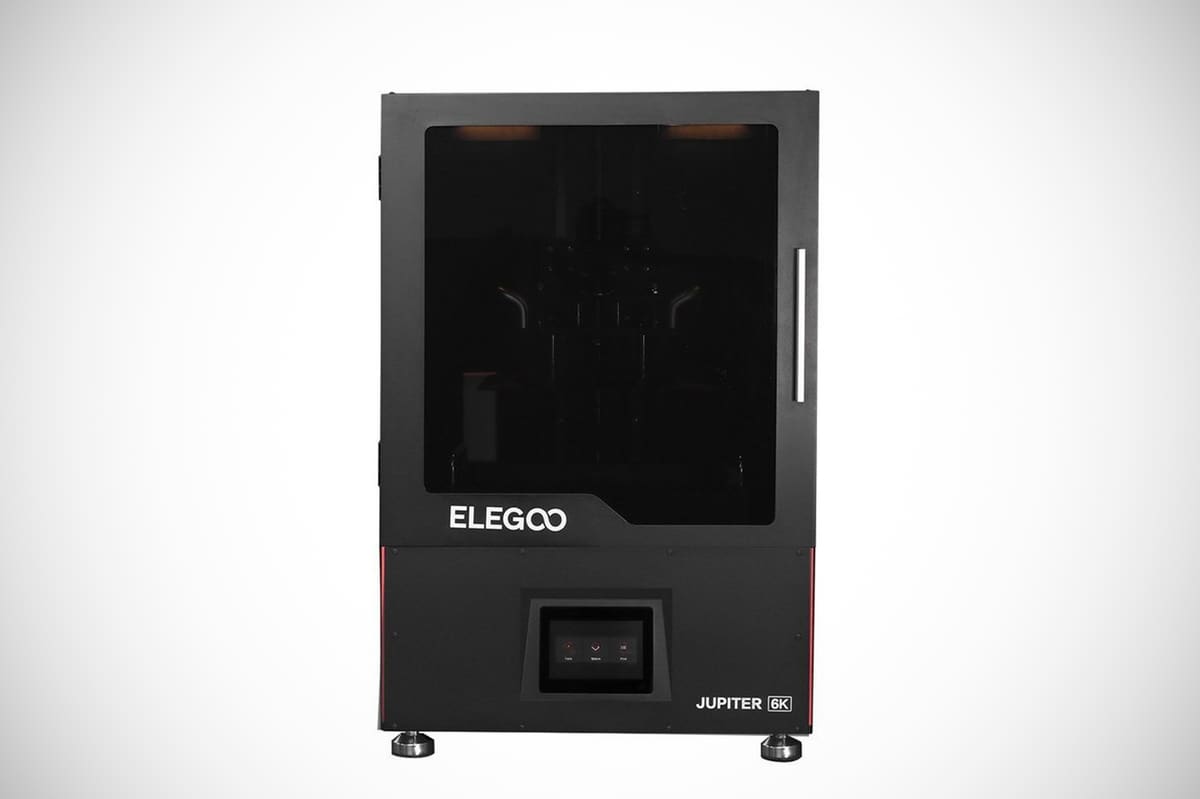
Since the backing phase on Kickstarter, with various early bird specials where you could back the product and receive a printer (once released) for as little as $600, the printer is now available for pre-order through Elegoo’s homepage for roughly double the price.
$1300 for the printer is a hefty sum, and seeing as it is a preorder price, you can count on the over-the-counter price tag to be even higher. Mind you, there aren’t many large resin 3D printers available for under $2000. But the Phrozen Sonic Mega 8K might prove to be the bane of the Jupiter. It is currently available for $1600 and has a larger build volume and higher resolution. In other words, a few bucks more will get you a lot more room to print with.

Tech Specs
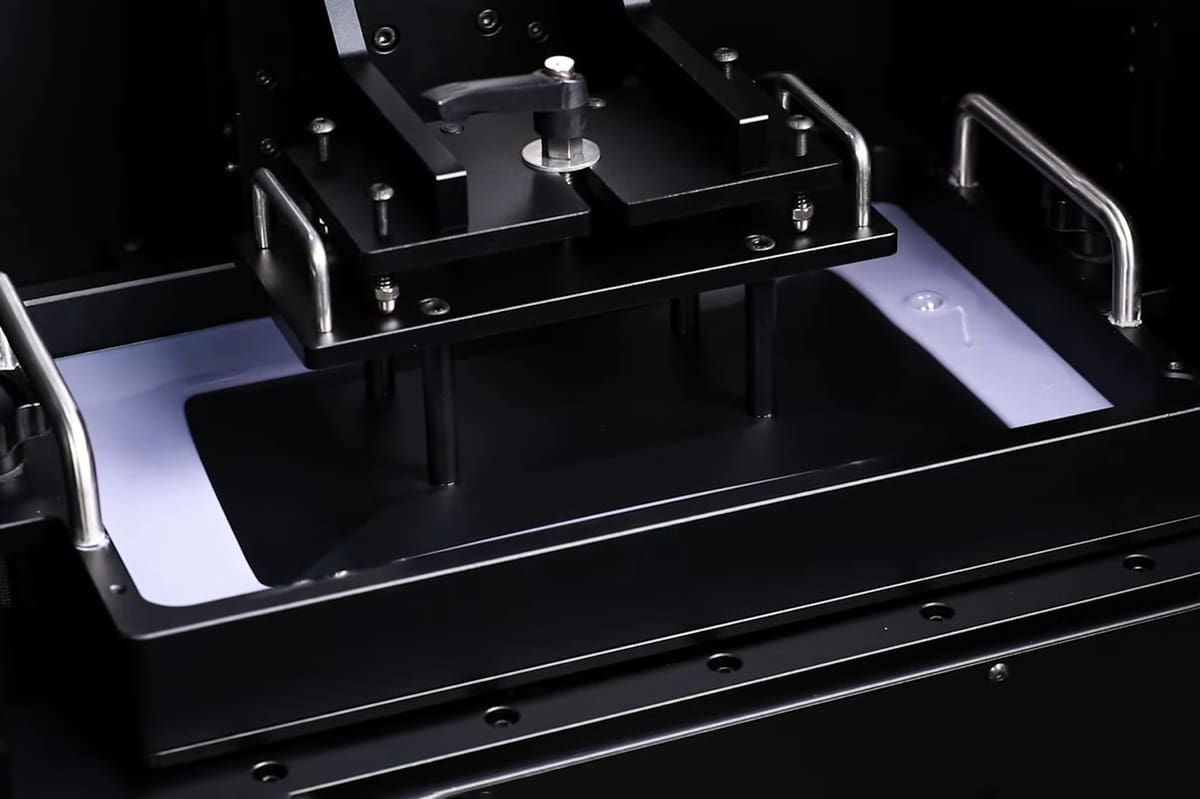
General Specifications
- Technology: MSLA
- Type: Resin
- Year: 2022
- Assembly: Fully-assembled
- Manufacturer: Elegoo
3D PRINTING SPECIFICATIONS
- Build Volume: 277 x 156 x 300 mm
- Layer Height: 10 microns
- XY Resolution: 51 microns (5448 x 3064 pixels)
- Z-axis positioning accuracy: 0.00125 mm
- Printing Speed: 30-70 mm/h
- Bed-Leveling: Manual
- Display: 5-inch touchscreen
- Third-Party Materials: Yes
- Materials: 405 nm UV resin
SOFTWARE REQUIREMENTS
- Recommended Slicer: ChiTuBox / ChiTuBox Pro
- Operating system: Windows / macOS X / Linux
- File types: STL
- Connectivity: USB
DIMENSIONS AND WEIGHT
- Frame dimensions: 498 x 358 x 750 mm
- Weight: 40 kg
- Boxed size: N/A
- Weight (packed): N/A

Similar Printers
Only testing will tell if the Elegoo Jupiter will be a strong enough proposition to make it into the ranks of our favorite large resin 3D printers. Our guide to the best large resin printers has all of our current recommendations on hand to help you find the right printer.
You may also be interested in the following printers:
Elegoo Saturn
The Elegoo Saturn is the Jupiter’s predecessor. With a build volume of 192 x 120 x 200 mm it offers a decent capacity for some large prints, but it is nowhere near the Jupiter’s true largeness. Equipped with a 4K monochrome LCD you get the same resolution, 50 microns, as on the latest Jupiter. With a price tag of $500, it allows for an affordable entry into large(-ish) resin 3D printing without breaking the bank.
Phrozen Sonic Mega 8K
The Phrozen Mega 8K is an absolute beast of a printer. Not only does it feature a 330 x 185 x 400 mm build volume – one of the largest commercially available – but with its 8K screen, it also provides an X/Y accuracy of 43 microns. It does not feature an automatic resin filling system, though. With a price tag of $1,600, it is also a first, as typically these goliath-sized resin printers have been found north of $2,000.
License: The text of "Elegoo Jupiter: Specs, Price, Release & Reviews" by All3DP is licensed under a Creative Commons Attribution 4.0 International License.
CERTAIN CONTENT THAT APPEARS ON THIS SITE COMES FROM AMAZON. THIS CONTENT IS PROVIDED ‘AS IS’ AND IS SUBJECT TO CHANGE OR REMOVAL AT ANY TIME.




